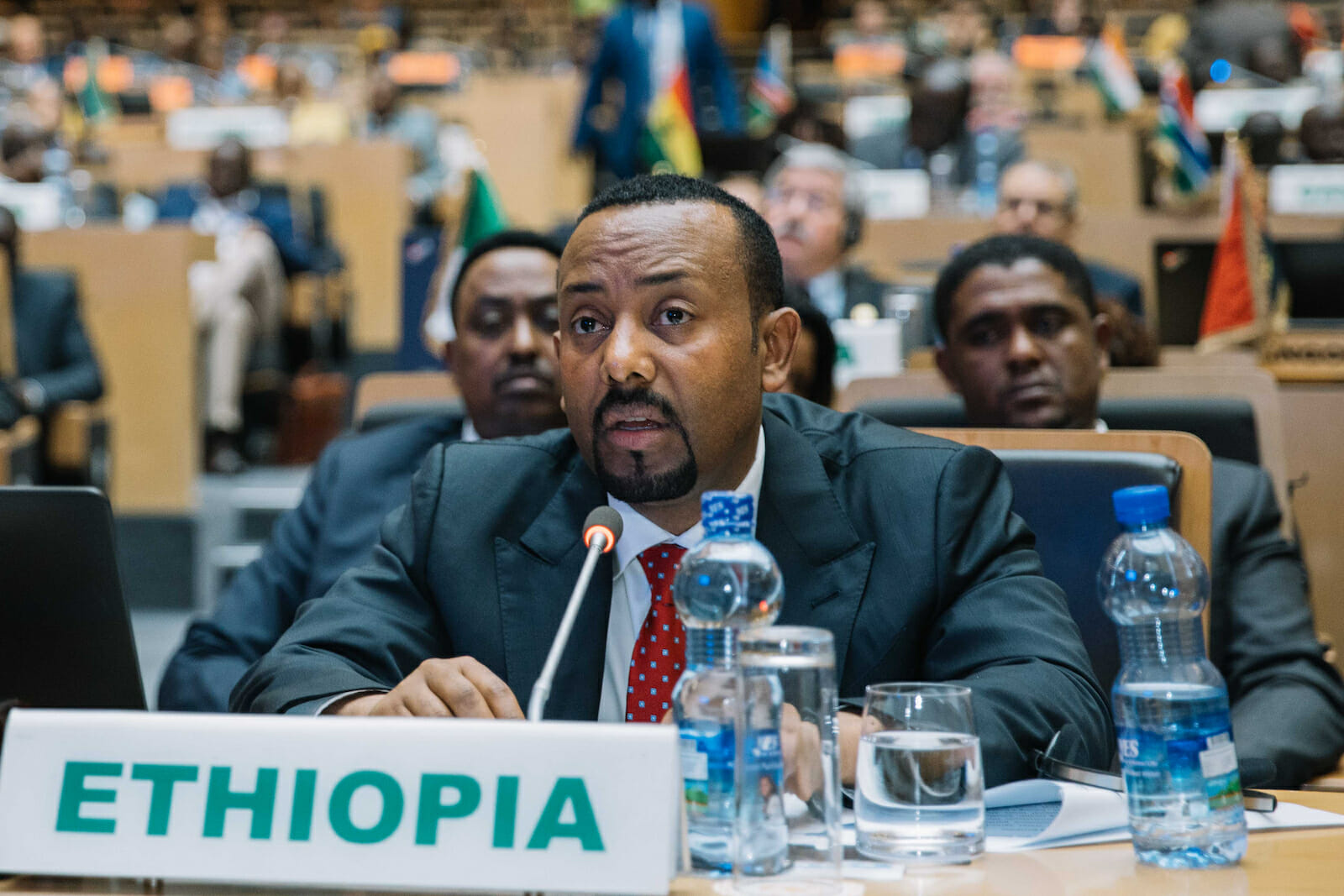
Nationalism is Fueling Ethiopia’s Dam Conflict with Egypt
Since construction began in April 2011, Egypt and Ethiopia have been at odds over the controversial Grand Ethiopian Renaissance Dam (GERD). The dam, built at the origins of the Blue Nile River which contributes 86% of the Nile’s waters flowing into downstream Egypt, has cost Ethiopia $4.6 billion and will have an installed capacity of 6.45 gigawatts, more than doubling Ethiopia’s domestic electricity production. Despite its massive energy benefits for Ethiopia, a growing economy with high energy demand, Egypt largely perceives the dam as a threat, jeopardizing access to the Nile’s water which it heavily relies on.
Upon completion, the GERD will be the largest hydropower dam in Africa and the 7th largest in the world.
In June 2020, Ethiopia shuttered the GERD’s sluice gate and began filling the dam’s reservoir for the first time, accumulating 4.9 billion cubic meters of water. Last week, officials announced that the second round of reservoir filling had succeeded in adding 13.5 billion cubic meters to the reservoir. While Sudanese officials said that the filling process has not yet led to a reduction in Blue Nile water flow, Egyptian leaders nonetheless view the GERD as an ‘existential’ threat. The threat is not only directed at the country’s main source of water but also at the most potent symbol of Egyptian national identity.
The Nile has been Egypt’s lifeblood for thousands of years. The first five dynasties of ancient Egyptian, 3050-2480 B.C.E., built monuments, grew abundant food, and had population surges during years of high-water flow. Years of low water would see famine and disorder, having long-lasting impacts on Egypt’s collective memory. Historians associate the seven years of famine recounted in the Book of Genesis with the drought of 1740 B.C.E., in which the Nile waters were dramatically reduced.
In modern times, Egyptian presidents have threatened to go to war over a reduction in the river’s water flow. “If it loses one drop, our blood is the alternative,” then-President Mohammed Morsi told a crowd of supporters in 2013 that burst into applause. “The great Nile is that which all our lives are connected to…as one great people.” Today, a quarter of employed Egyptians work in agriculture, a sector which uses 86% of Egypt’s water supply, which by 2025 is projected to drop below 500 cubic meters per capita, a level characterized by hydrologists as “absolute scarcity.”
Nationalist rhetoric is fueling a war of words and cyberattacks. In June 2020, a group of four young Egyptians hacked into more than a dozen Ethiopian government websites. The hackers, calling themselves the Cyber_Horus Group, replaced each site with an image of a skeleton pharaoh, clutching a scythe in one hand and a scimitar in the other. “If the river’s level drops, let all the Pharaoh’s soldiers hurry,” warned a message underneath. “Prepare the Ethiopian people for the wrath of the Pharaohs.” Several weeks later, a 21-year old Ethiopian TikTok influencer named ‘Liz’ — who had 70,000 TikTok followers — recorded a video of herself dancing in her room to an Egyptian song alongside a written message: “Distracting the Egyptians while we fill the dam…There’s no other country that can stop us…It’s our right.”
3️⃣. ❇️تتضمن معظم المواقع المخترقة بحسب موقع كوارتز أفريقيا رسالة 📜بالهيرغليفية مفادها
إذا انخفض مستوى النهر ، فليسرع جميع جنود الفرعون ولا يعودوا إلا بعد تحرير النيل ، مما يحد من تدفقه”. pic.twitter.com/HK3vf1pcVk— Shifa Al-Afari (@AfariShifa) June 30, 2020
On Twitter, Egyptians are using the hashtags #Nile4All and #EgyptNileRights to voice their opposition to the GERD. Originally spoken by Ethiopia’s water minister, “It’s my dam” has been adopted by Ethiopians in pro-GERD protests, articulating the growing importance of the infrastructure project to Ethiopian identity. As the dam began its first filling in June 2020, Ethiopian Prime Minister Abiy Ahmed’s press secretary tweeted a poem titled, “Ethiopia Speaks,” reading: “My mothers seek respite/From years of abject poverty/Their sons a bright future/And the right to pursue prosperity.”
To both governments, the GERD dispute fuels their respective nation-building objectives. Egypt’s Abdel Fattah el-Sisi rose to power in 2014 on a nationalistic platform, emphasizing national security and infrastructure projects. As GERD’s construction progressed, to defend the Egyptian nation meant defending its water. One well-produced video on Facebook articulated his administration’s position, “The cause of water shortage is Ethiopia building a dam five times bigger than it needs…Egypt has the right to life.”
At a news conference in the Suez Peninsula, Sisi declared, “No one can take a drop from Egypt’s water, and if it happens there will be inconceivable instability in the region.” By fighting for water that ‘belongs’ to Egypt, Sisi himself is defending Egyptian identity.
Prime Minister Abiy Ahmed has repeatedly illustrated his country’s stake in the GERD dispute, saying in March 2020, “Ethiopia doesn’t have any intention to cause harm to Sudan and Egypt. But we also don’t want to live in darkness.” In 2018, only 45% of Ethiopia’s 110 million people had access to electricity and for those connected to the grid, blackouts have been a frequent issue. Between 2013-2016, Ethiopia’s national grid recorded 49 blackouts, the longest one lasting 22 hours.
By producing massive amounts of clean energy, and even generating revenue of up to $1 billion in excess electricity sales, the GERD will become a symbol of pride for Ethiopians. The dam’s name, “Renaissance,” refers to the aspirations of African self-reliance and a deliberate approach to reinvigorate Ethiopian national identity with indigenous prosperity.
Before resolving broader issues of water allocation among Nile riparian states — agreements signed in 1929 and 1959 with Britain granted Egypt 87% of the Nile’s water flow — Ethiopia and Egypt must achieve a legally binding agreement outlining mutually satisfactory details on GERD’s water release and containment during the filling process.
Regarding the filing timeline, a reasonable dispute settlement would establish incremental water releases that result in a filling timeframe of 8-9 years, a compromise between Ethiopia’s desired 5-7 years and Egypt’s desired 10-12 years. A mechanism providing real-time data sharing between Ethiopia, Egypt, and Sudan on GERD’s inflow and outflow volumes would help protect Sudan’s Merowe Dam and Egypt’s Aswan Dam from unexpected floods.
Nationalist sentiment introduces perceptions of ‘zero-sum’ into the dispute, making it difficult for leaders to publicly accept compromise. Detaching the resource dispute from issues of national identity is hard but essential in order to reach a binding settlement. Leaders from both African countries must define limits on the GERD’s water retention and establish mechanisms for data-sharing. These steps can bring about Ethiopia’s long-awaited renaissance, while ensuring Egyptians right to water, validating national symbols of life and prosperity for both nations simultaneously.

